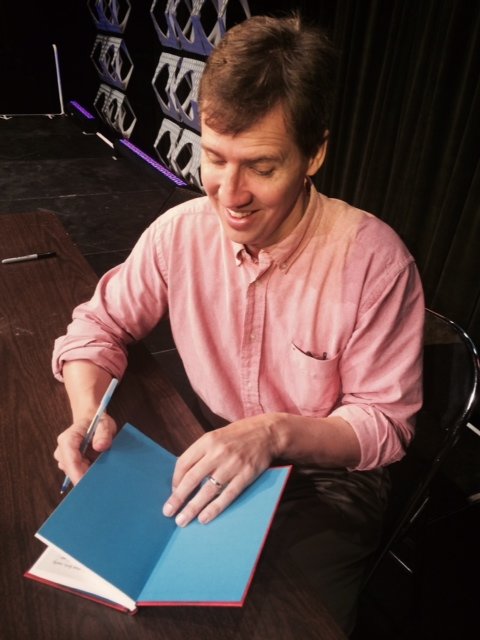Newspapers (and Illustrations) Motivate Readers and Writings
Dav Pilkey received the Caldecott Honor medal for the book Paperboy, a book I often read aloud at workshops. The boy’s daily routine appears quiet and solitary. He’s running a small business and doing well at it. He gets up early each morning. With his dog by his side, he rides his bike from house to house, delivering newspapers. Paperboy lays out what the boy and dog do, in step-by-step or chronological order. Author Dav Pilkey spoke at the 2014 International Reading Association (IRA) conference where he described his difficulties with reading and fitting in in school. He spoke too about his books. He credited one young fan for pushing him to write more books about Ricky Ricotta. Few paperboys deliver newspapers these days, but those who did remember serving their customers and collecting payments. Many who spent their careers in journalism were inspired by their first jobs delivering or assembling newspapers. So is the case of current 6th grade Boston-area teacher, Peter Sipe. Sipe remembers the lessons he learned from working as a paperboy and advocates for using newspapers for instruction. He likens teaching to delivering newspapers; both are “solitary” jobs. No doubt, Dav Pilkey would add writing to that list. At the keynote, he showed himself riding a kayak into a cave where he writes his books. Sipe believes he’s addressing the “knowledge problem,” when he opens up newspapers with his students. He also speaks of motivation; students embrace reading newspapers but wouldn’t if he called newspapers “nonfiction text packets.” He asserts, “Please lend this old paperboy a hand by putting old-fashioned nonfiction text packets in your students’ hands. I bet you’ll be surprised at what you learn.” Read his post to learn more about his teaching: http://coretransition.wordpress.com/2014/05/12/the-40-year-old-paperboy/ Dav Pilkey also spoke about motivation. He was taught an alternative alphabet in first grade, but the school he attended in second grade knew nothing about the alternative alphabet. That’s the year his teacher put a desk outside her door, just for “Mr. Pilkey.” Second grade was the year Pilkey learned that “underpants” was a word that made his classmates laugh and adopted that word in his writing. Until he was freshman in college, he was not encouraged to write and draw. His biography is presented in comic format here: http://www.pilkey.com/pdf/dav-pilkey-bio.pdf Pilkey found reading difficult but he enjoyed heavily-illustrated books and collected comic strips, and he relies heavily on illustrations for his books. Jeff Kinney is also a cartoonist and author of children’s books who delivered a keynote address at the IRA convention. Jeff is the author of the award-winning books, Diary of a Wimpy Kid. He had drawn cartoons for his college newspaper and dreamed of working as a cartoonist for newspapers, but he couldn’t convince a syndicate to distribute his work. Read more here: http://www.wimpykid.com/ Pilkey and Kinney both spoke of their appreciation for Mad Magazine, a publication often called inspiring by other writers, particularly editorial cartoonists. Humor and satire, they believe, build intellectual skills. Whoever draws cartoons knows something, so cartooning addresses the “knowledge” problem, and a cartoonist is creative, writing from a perspective of his or her own choosing. Pilkey identifies other books that he loved to read in this newspaper story: http://www.smh.com.au/entertainment/books/books-that-changed-me-dav-pilkey-20140509-37yv8.html. Note that Charles Schultz is on his list. He raises the questions: How did you learn to read? What did you love to read? Why? ……………………………………………………………… What’s the take-away from two authors and a teacher? Read the Paperboy by Dav Pilkey and interview someone who did that job. Perhaps, throw some newspapers to discover how that feels. Pick up newspapers to use in your classrooms; use the content about today’s world to build students’ knowledge. Use humor. Encourage illustration. Don’t let “inappropriate” stories stop you. Let young people make reading choices. And, don’t forget comics and cartoons, whether on comic or opinion pages. Review instructional ideas for comics in this Visual Literacy guide, published in 2006 HERE and HERE. Written by Sandra Cook, May 14, 2014




